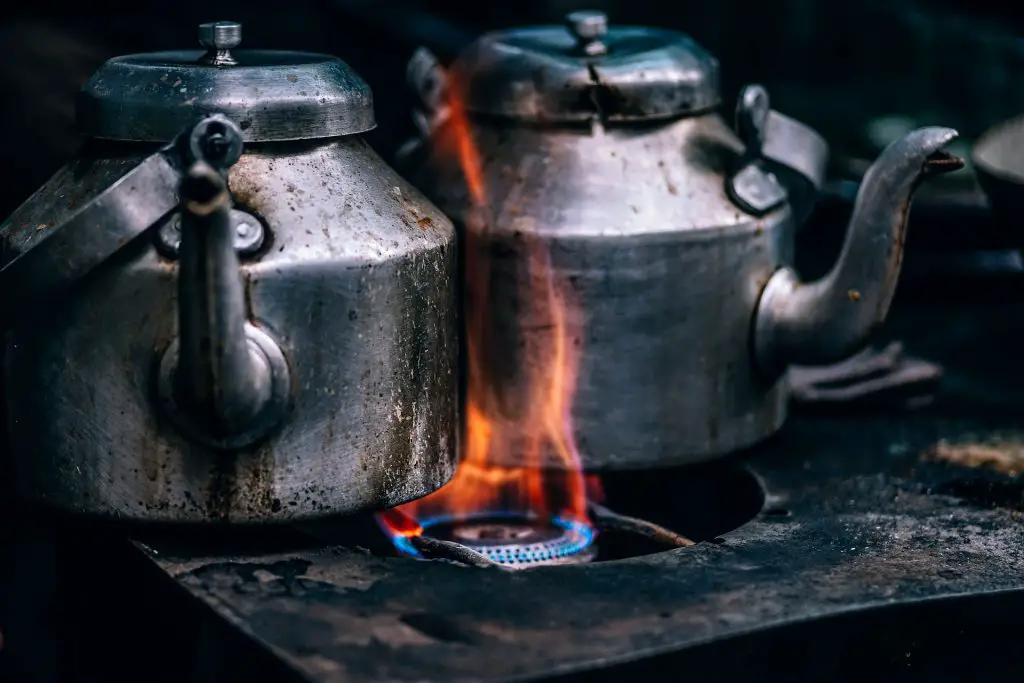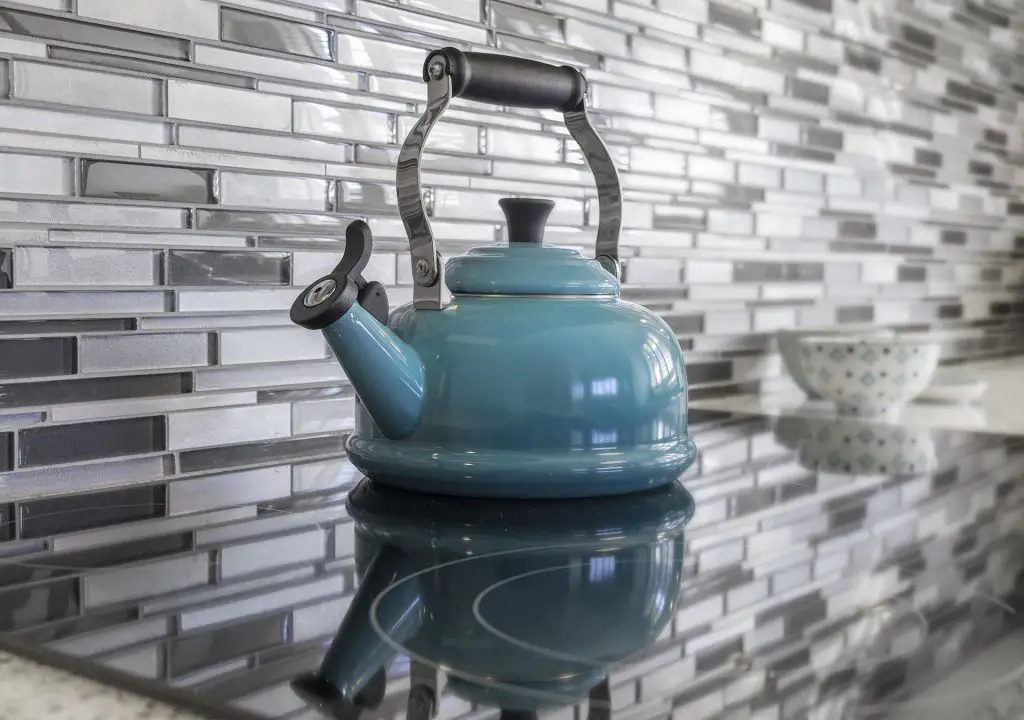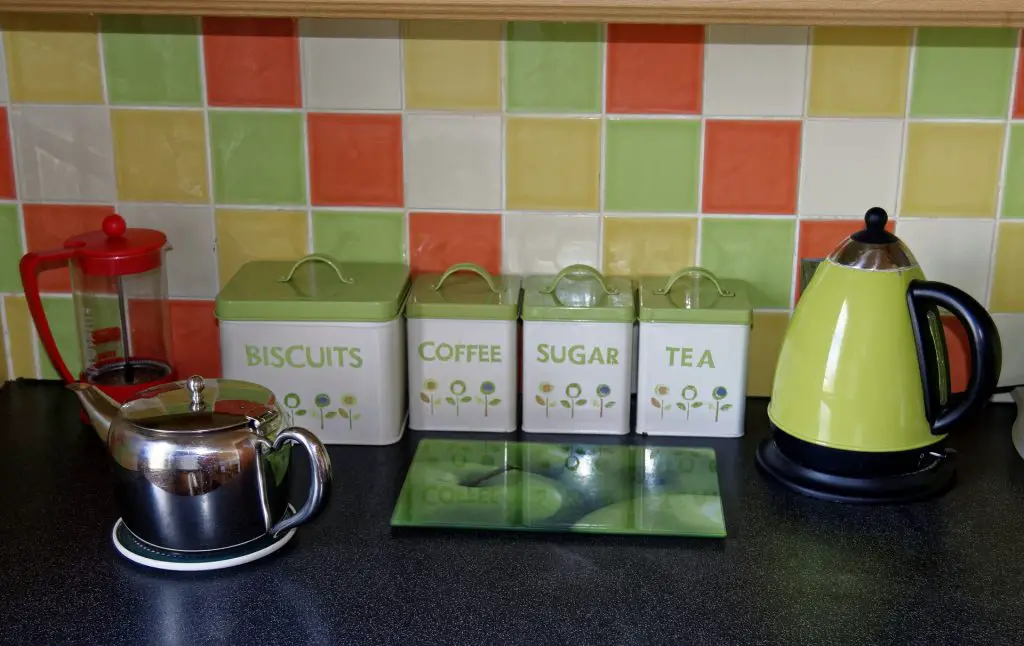how to clean inside of tea kettle
If you buy something through a link in our posts, we may get a small share of the sale.
Whether you heat water for tea in a kettle on the stove, have an electric kettle that boils water for you on the counter, or even just boil water in a pot, it is very likely that you will experience a white residue on the inside. This chalky substance is called scale and can affect the flavor of your tea. We will teach you how to clean the inside of a tea kettle in order to solve this problem.
Quick Navigation
- How to Clean the Inside of a Tea Kettle
- Using Vinegar to Clean the Inside of a Tea Kettle
- Using Baking Soda and Lemon to Clean the Inside of a Tea Kettle
- Why the Inside of a Tea Kettle Gets Dirty
- What is Scale in Tea Kettles?
- Tips for Cleaning the Inside of a Tea Kettle
- Conclusion
How to Clean the Inside of a Tea Kettle
Before using any extreme measures to clean scale or any other buildup in your tea kettle, first wash with simple soap and water. If you have an electric kettle, be sure not to submerge the entire body in water.

Using Vinegar to Clean the Inside of a Tea Kettle
- Fill the kettle with equal parts water and white vinegar.
- Boil the water and vinegar mixture.
- Turn off the kettle and let sit, covered, for a few hours as it cools.
- Pour the liquid down the sink.
- Check for stubborn stains or buildup.
- Rub remaining stains with a clean damp towel, or alternatively, a bottle brush if your hand will not fit inside.
- Rinse and repeat as necessary to remove all traces of scale and other stains.
- Wipe down the outside with a damp cloth or, if necessary, clean with a little bit of soap and water.
- Wash the interior with soap and water to help remove any lingering vinegar odor.
- Dry the inside and outside of the kettle with a soft cloth.
Using Baking Soda and Lemon to Clean the Inside of a Tea Kettle
- Fill the kettle almost to the top with fresh water.
- Add 2 tablespoons of baking soda or salt.
- Add 2 tablespoons of lemon juice.
- Boil for 30 minutes. Be sure the water does not completely boil off.
- Allow to cool completely.
- Pour out the cleaning solution.
- Rinse completely.
- You may want to wash with soap and water to get rid of the vinegar smell.
- Dry with a clean cloth.
Why the Inside of a Tea Kettle Gets Dirty
Many households have water with a high mineral content, also known as "hard water." Calcium and magnesium are the primary minerals that appear in tap water, both through the city's water supply as well as from local wells. It is easy to tell if you have very hard water when you wash your hand with soap, and after rinsing, they feel like there is a substance still on them.
Spots are also more prevalent on air-dried glassware.

When hard water boils, it also reduces and some of the solids are left behind. The buildup we normally see in a tea kettle builds up over a period of time from consistent boiling water, and happens especially quickly when kettles are left to air dry or not emptied. You can reduce the amount of scale buildup by washing and hand drying your tea kettle after use.
To descale your tea kettle, use a slightly acidic solution and heat.
What is Scale in Tea Kettles?
Also known as limescale, even though it is not made up of lime, scale is a buildup of calcium carbonate due mainly to evaporation. The level of minerals in the water will define how quickly scale accumulates, as well as how you treat your tea kettle. If you do not clean and dry your tea kettle on a regular basis, scale will build up more quickly.
Here are some issues that scale can cause in tea and tea kettles:
- Flat tea taste and lack of aroma
- Chunky pieces floating in tea
- Buildup on the heating element in electric kettles, making them inefficient until cleaned.
- Clogging up whistling tea kettles so they do not whistle anymore
- Scale may increase the chance of rust on metal surfaces, even stainless steel
The scale is not inherently bad for your health, so the small amounts that you will find in a regular household tea kettle will not harm you. The scale does, however, affect the way your tea tastes. The presence of excess calcium and magnesium make tea taste flat.
These minerals, when present in large amounts in hot water, help prevent the extraction of the flavor and scent properties of tea. This results in a flat taste and a limited bouquet, perhaps making you think there is something wrong with the tea leaves themselves. In addition, pieces of scale buildup can break off the surface of the tea kettle and float in your tea, making for a surprise chunky texture in your favorite brew.
Scale buildup can also cause your tea kettle to have a shorter lifespan if not taken care of on a regular basis. Heating elements are very easy to attract scale since it is the primary form of heat and evaporation. This can occur both on the inside and outside of electric tea kettles, and you will notice the water taking longer to heat.
Rust stains will normally develop due to the presence of iron in hard water, and if dealt with quickly, should not cause permanent damage. Since it will be from the water itself, and not a rusting of the inside of the tea kettle, it will wipe off with vinegar or other gentle acidic treatment.
Tips for Cleaning the Inside of a Tea Kettle
Here are some additional tips that will help you reduce the amount of scale you have to deal with, as well as maintaining your tea kettle in tip-top condition.

- Do not let water sit in the kettle when it is not being used. When water sits in a tea kettle, it will naturally evaporate, even if the lid is on or a stopper is in the neck. This evaporation will add up to create more scale. Empty and dry your tea kettle after every use.
- Bar Keepers Friend can be used on stainless steel. Sometimes some extra oompf needs to be added to remove tough stains. A small amount of Bar Keepers Friend mixed into a paste with water can be very effective on scale, rust, and other stains. Be sure to follow the manufacturer's instructions.
- Never let your tea kettle boil dry. A kettle is not made to heat up without liquid inside of it, and the extra buildup of heat may ruin it. Even if it only boils dry for a few minutes, you still have to worry about excess scale.
- 1 to 2 tablespoons citric acid will work as well. Instead of vinegar or lemon juice, you can use packaged citric acid to descale surfaces.
- When using kettle daily and in a hard water area, descale every two weeks. If you have soft water, you may only need to clean the inside of a tea kettle every few months.
- Check all parts of the kettle for scale buildup. Pieces that make up a whistling kettle, top lids, and sometimes even handle joints can house limescale and rust. Also, check the bottom of electric kettles, water spilled can create scale where you might not expect.
Conclusion
Scale buildup is not harmful to our health, but it can seriously affect the taste and experience of drinking tea. Cleaning the inside of our tea kettles on a regular basis can help them last longer, as well as ensuring that every brew tastes just as good as the last one.

Scott is the founder of TeaMinded. He enjoys tasting and discovering teas from across the globe, with green teas and ceremonial matcha from Japan being among his favorites. He's grateful to be immersed in the tea community, always learning and sharing along the journey.
how to clean inside of tea kettle
Source: https://teaminded.com/how-to-clean-inside-tea-kettle/
Posted by: caricoevelf1974.blogspot.com

0 Response to "how to clean inside of tea kettle"
Post a Comment